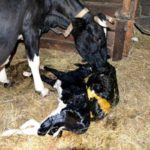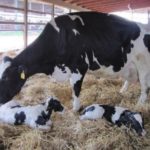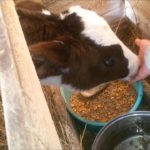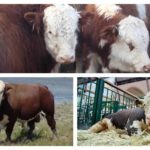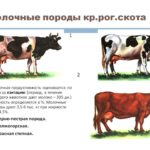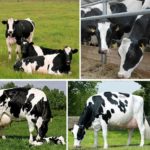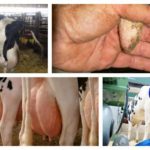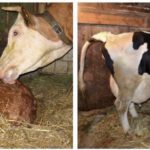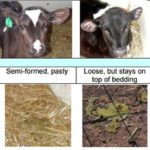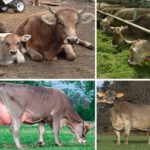The appearance of a calf on the farm is a great joy for the farmer, because it means an increase in the number of livestock, the opportunity for further development, and good profits in the future. But whether to rejoice at the birth of twin calves - many novice farm owners do not know the answer to this question, they worry about the health of the cow and have no idea how to feed the babies, because they may simply not have enough milk.
Can a cow give birth to twins?
Usually a cow gives birth to one calf, but there are exceptions. Only 2-4% of cow pregnancies end in twins. Multiple pregnancy is a difficult test for an animal; in this case, examinations by a veterinarian are necessary, as well as additional inclusion in the diet of vitamins and minerals (especially calcium supplements), which a doctor will help you choose.
The cause of multiple pregnancies may be the infertility treatment that was carried out on the cow before insemination; the likelihood of having 2 calves is higher in highly productive cows that produce a lot of milk. Among such animals, 20% of cows give birth to twins.
As a result of a double pregnancy, the cow is likely to develop complications during calving: postpartum paresis, inflammation of the uterus, problems with the discharge of the placenta.
The presence of a veterinarian at calving is an additional expense for the farmer, and there is much more worry in the event of twins calving.
How to determine that there will be twins?
Previously, we learned about twins at calving after a manual rectal examination of the pregnant mother or at the time of birth. The examination did not give accurate results; the probability of error was very high. Today, at 1.5-2 months, she can undergo an ultrasound examination. During this period, the embryos are still small in size, but are already clearly visible on the screen.
Features of childbirth
When calving twins, a cow will probably need help during labor. The following signs indicate that the process will soon begin:
- the udder swells and turns pink;
- nipples and perineum swell and turn red;
- the animal often lies down and may moan plaintively;
- the amount of mucus from the vagina increases, it can hang down like a transparent thread;
- the stomach drops, the ribs clearly appear;
- the cow raises her tail at the base;
- manure and urine are expelled frequently, in small portions;
In this case, it is necessary to monitor the cow, especially if 2 babies are expected. From the moment contractions begin until the calf appears, it takes from 30 minutes to 2.5-3 hours. It depends on the age of the cow, the number of calvings, and the breed of the animal.
If the birth is going well, no human intervention is required, you should wait patiently and calmly until the calf's legs appear. With correct presentation, one calf appears forward with its front legs, the other with its hind legs.
Babies can be placed on top of each other. In this case, you should insert your hand into the vagina, feel the legs of the upper calf and gently pull it, helping to give birth. They do the same with the second baby. The interval between the birth of calves is 1-2 hours. After the first birth, the cow should be given water. The appearance of 2 placenta occurs if the calves are two-egg (bull and heifer); at the birth of identical babies there will be one placenta.
The cow must be allowed to lick the newborns; if she is unable to do this, the babies are wiped with a clean cloth and the nasal passages are cleared of mucus. After birth, calves are given 1.5 liters of colostrum within an hour. The cow should be given warm water to drink.
Subtleties of development of same-sex and opposite-sex twins
If 2 bulls or 2 heifers are born during a twin calving, the owner receives regular calves. In the case when a bull and a heifer are born, the girl will most likely have an excess of male hormones. Such animals are called freemant, they are sterile and look more like bulls.
The bull in such a pair is ordinary, it can become a good sire.Fremant heifers are fattened for meat, they have increased muscle mass, and are larger than ordinary cows.
Feeding twins if there is not enough cow milk
Colostrum is given to calves for the first 4 days of life. After this, they transfer to milk. To strengthen the immune system and if a cow does not have enough milk for two babies, they can be given collected milk from other cows. If this is not possible, buy replacement milk (whole milk substitute), it is enriched with essential vitamins and minerals. The product is selected according to the age of the calves. Babies should not be given soy or goat milk, they cause calves to develop diarrhea.
In this case, some owners begin to give oatmeal jelly and a steamed mixture of grains from the age of 2 months, and then transfer them to adult food. Of course, giving birth to a cow and raising twins for the owner is a lot of work. But this is a huge experience for the farmer and an unexpected gift, which, with due diligence, will result in significant profit.



